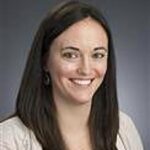From the time a pediatrician or parent suspects a child could be affected by autism spectrum disorder (ASD) until an actual diagnosis takes over two years! On today’s episode, we learn about two strategies that are currently in use to reduce that time to just weeks — or even days.
Guests:
Richard Uhlig, CEO, Quadrant Biosciences
Steven Hicks, MD, PhD, Chief Medical Officer, As You Are
Brittany Perry, DO, Clinical Assistant Professor, Primary Care Pediatrician, Nemours Children’s Health, Delaware
Meghan Harrison, DO, FAAP, Primary Care Pediatrician, Nemours Children’s Health, Delaware
Host/Producer: Carol Vassar
EPISODE 62 TRANSCRIPT
Carol Vassar, podcast host/producer:
Welcome to Well Beyond Medicine, the Nemours Children’s Health Podcast. Each week, we’ll explore anything and everything related to the 80% of child health impacts that occur outside the doctor’s office. I’m your host, Carol Vassar, and now that you are here, let’s go.
MUSIC:
Well Beyond Medicine
Carol Vassar, podcast host/producer:
Autism spectrum disorder, or ASD, is a developmental concern caused by differences in the brain. According to the Centers for Disease Control and Prevention, ASD affects about one in 36 children in the US today. Symptoms of ASD usually appear before the age of three. Pediatricians and observant parents are key drivers in any diagnostic process. If ASD is suspected, a pediatrician often refers out to other qualified professionals for a complete workup. However, the time from that first referral to a medical determination, one way or the other, is often lengthy.
A study led by Yu-tsen Chen published in the Journal of Pediatrics in September 2023, found an average delay of longer than two years from the first screening to diagnosis. For children who are determined to be affected by ASD, that’s two years, often without life-changing intervention and treatment. Time clearly is of the essence. In this episode, we’ll hear about two initiatives that are being used today to shorten the delay from screening to diagnosis for ASD. One involves telehealth, and we’ll hear about that in a few minutes.
Right now, ASD diagnosis within the primary care setting. It’s an initiative of doctors Brittany Perry and Meghan Harrison, who observed this delay firsthand in their practice and were determined to find a solution. Both are primary care pediatricians in the Behavioral and Developmental Access Clinic, part of the division of Developmental Medicine at Nemours Children’s Health, Delaware. Here, they provide developmental assessments for young children under the age of five and see a fair share of potential ASD cases. Their hypothesis? Build a pathway to allow ASD diagnosis to occur within the primary care setting, the child’s familiar medical home. Here’s Dr. Meghan Harrison.
Dr. Meghan Harrison, Nemours Children’s Health:
Something that Dr. Perry and I noticed in our work in developmental medicine was something that’s a problem really across the country, which is long wait lines and long wait times for children who need assessments for autism. Really, after the pandemic, we saw those numbers just climb and climb.
What we noticed was our primary care patients were being referred to our autism center for evaluations. And some would wait six months, some would wait 12 months. We really wanted to try to problem solve a different way, a different opportunity for our patients. We went to our division chief in primary care and said, “Can we try to do this in primary care? Can we try to come up with a better way for our primary care patients to access these evaluations?” That’s really the background to how this started.
We came up with an autism evaluation pathway that we now are able to offer focused autism assessments for our primary care patients within the medical home, within the primary care clinic. Rather than those patients having to be referred to a specialty center and sit on a wait list and engage in some of the barriers that we sometimes see with accessing specialty appointments and wait times and transportation and sometimes language barriers.
Carol Vassar, podcast host/producer:
How long is this waitlist from the time that the pediatrician may be suspects that a child may be diagnosed with autism until they get their assessment? How long does it usually take? Brittany.
Dr. Brittany Perry, Nemours Children’s Health:
At our center, correct me if I’m wrong, Meghan, I believe our wait time was 12 to 24 months.
Dr. Meghan Harrison, Nemours Children’s Health:
That’s what we were told.
Carol Vassar, podcast host/producer:
That’s a long time. Parents have to wait that long to get an assessment.
Dr. Brittany Perry, Nemours Children’s Health:
Yes.
Carol Vassar, podcast host/producer:
That was really the problem at hand. Describe to me the new pathway. Give me the details of that.
Dr. Meghan Harrison, Nemours Children’s Health:
With our new pathway, if a child in our primary care clinic is identified as having characteristics of autism, and that can be through a screening tool that we use in primary care, such as the M-CHAT, or through discussion with the family at any visit. The provider observes differences. The family brings up their own concerns. Then that patient is given the opportunity to have their autism assessment scheduled in primary care rather than the referral to the autism center.
If the family chooses to have the autism evaluation at primary care, then there are really two options. If one of our colleagues, one of our attending colleagues, identifies the child who needs further assessment, then that patient can be scheduled with myself or Dr. Perry and will complete an autism assessment that really mirrors what we would be doing at the autism center within the primary care clinic. Right in the same module where the patient is used to coming, where they’re comfortable coming, and we’ll do the same assessment there in that module.
If the patient is evaluated by a resident, so a unique aspect of our clinic is that it’s a resident learning clinic. So, if the resident identifies the patient at risk for autism, then we are scheduling that patient for an autism assessment with the same medical resident. The resident is really then an integral part of the autism evaluation that Dr. Perry or I will be the supervisor for and participate in.
Really, what we found is we were able to see patients back in an average of six to eight weeks, which is far less than the typical wait time for an autism assessment. Again, provide an assessment that was really very similar to what they would be receiving in the autism center. Not identical, but very similar components. In many cases, be able to determine in that visit, yes, this patient does have characteristics that fit with autism. Then we could talk to the family about that and explain more about autism and how to support their child, and how to support the family. We could tell lots of children who didn’t meet criteria for autism and how to support their child in the differences that were there.
Carol Vassar, podcast host/producer:
That gap of time that you are closing is important. Why is that, Dr. Perry?
Dr. Brittany Perry, Nemours Children’s Health:
We know that early identification of autism leads to earlier intervention services specific to autism and can improve outcomes. It’s very well-documented in the literature. I think the other thing that’s really important is we can narrow the variability of the patients that we’re seeing. If you think about it, a lot of children are referred for autism evaluations, some of those children never actually make it to the specialty center that they were referred to because of barriers to accessing that care.
One of the things that we saw through this work is there’s less variability in the wait time for all of the patients that we saw in primary care in the medical home compared to the variability that we’re seeing at the specialty center. There are some children at the specialty center that are seen in one to two months, and others that were being seen much later.
Carol Vassar, podcast host/producer:
What were some of the access issues that you had found that you’re now able to, in some ways, overcome, Dr. Harrison?
Dr. Meghan Harrison, Nemours Children’s Health:
We’re trying to, with some data that we’re analyzing right now, we’re trying to really identify what might be the most prominent barriers for our clinic, for our Nemours’ population really. But we suspect language is a barrier for some families. We suspect transportation. We make an appointment, and then there are no-shows. We evaluated lots of charts for patients who were referred to our autism center, and visits were scheduled, but then there were no-shows, and there were cancellations.
We know that different families have different resources. Some parents are able to call every day and try to access a cancellation visit. Other parents may not realize that that’s an option or may realize it’s an option but not be able to do that based on their workday or what they’re doing. We really just feel like the medical home where patients can get to, they’re coming to their well-child visits where they can speak the language of the providers, where we have, luckily in our clinic, care coordinators and social workers to help support. If we schedule a child and they don’t show up, we can have somebody call and figure out why and how can we help get you there next time.
It’s really, I think, we’re learning as we go a little bit about what some of these barriers are and how we may really be able to mitigate them by doing the work in primary care.
Carol Vassar, podcast host/producer:
I realize this is probably early days as you do your research as you move this project forward, but do you have any results with regard to children that have gone through this new pathway who perhaps have benefited, they’ve gotten the services they need, and they’re on a good track educationally, socially, et cetera? Any examples? Go ahead.
Dr. Brittany Perry, Nemours Children’s Health:
More to come on that.
Carol Vassar, podcast host/producer:
More to come on that.
Dr. Brittany Perry, Nemours Children’s Health:
Right now, we’re building the pathway in primary care, and as we learn more from doing these evaluations in the medical home, we can expand on our current model. One of the things that we’re hoping to look at in the future are caregiver perspectives on autism assessments in primary care. How did they feel it went? Was this helpful? Was it beneficial? Then to continue to tailor our model to benefit the patient and their families.
Dr. Meghan Harrison, Nemours Children’s Health:
We are seeing the patients that we have evaluated, and we are seeing them able to access the services at the autism center that Nemours is associated with quickly. We have lots of patients who are able to be in parent-mediated behavior interventions quickly, who would otherwise still be waiting for the assessment.
We have parent support groups through the autism center for parents of children who have newly received an autism diagnosis. We’re able to support the child with the interventions and also, I think, support the families better by not having this big gap of time where they’re not really sure what’s going on or what’s best to do. There’s so many different ways that getting this information sooner has the potential to help. But yes, the true outcome data, I think we’re hoping to really be able to look at that in the future.
Carol Vassar, podcast host/producer:
Certainly, we’re at early days with regard to how this benefits the child long-term. Let’s turn to, and I hate to be gauche about it, but let’s turn to the money side of this. The earlier the intervention, the better the outcome for the child, which ultimately saves money. Children who are going through this intervention are having this as part of their well-care, which is covered by insurance, isn’t it?
Dr. Meghan Harrison, Nemours Children’s Health:
They’re being identified at their well-child visits most of the time. This is an additional visit. This is a problem-focused visit that they would have after their well-child visit.
Carol Vassar, podcast host/producer:
Is it covered by Medicaid, most importantly, if we’re talking about access barriers for people who maybe can’t afford healthcare, and also by private insurance?
Dr. Meghan Harrison, Nemours Children’s Health:
The visits are because the visits are done in primary care by people who are their primary care providers. Some of the patients, I’m glad you brought this up. Some of the patients in our catchment area in Nemours are referred to the autism center, but they don’t have insurance that the autism center accepts. Being close to Pennsylvania and close to New Jersey and close to Maryland, there’s a whole group of children who can’t actually be seen there. Again, getting that assessment in their medical home, we know that that can happen. We know that it will be covered, that we can get it scheduled, that the providers are within the payer system.
Carol Vassar, podcast host/producer:
Let me ask this. How are families reacting to having this new pathway?
Dr. Meghan Harrison, Nemours Children’s Health:
Thus far, families are excited, I would say, overall. We will be getting some more structured data on that through an interview process. But thus far, anecdotally, based on our experiences, families are really happy. I would say our colleagues are happy because they have the opportunity to offer families a sooner appointment. Families accept the appointment for the most part, as far as I know, and are definitely grateful that they can be seen in a much more timely way than they might if they were referred to the waitlist.
Dr. Brittany Perry, Nemours Children’s Health:
I think the waiting is really, really hard for families. I mean, if you just imagine yourself in a parent or a caregiver’s shoes, you go to your pediatrician, and your pediatrician says, “I’m seeing characteristics of autism. I’m going to refer you for further assessment.” Then you have to call a bunch of places and get on waiting lists. You’re told when you call that they’re not taking patients or the wait list is nine to 12 months for an initial appointment, but you were just told that getting evaluated is really important and getting early intervention services if a diagnosis is made. That’s really hard. That’s really hard for parents. I think we’re feeling that sentiment when families are offered an appointment, and they can come back in a few weeks for that assessment and to have that care coordination. It feels good.
Carol Vassar, podcast host/producer:
What’s the future of this project? Where do you want to see this go next?
Dr. Meghan Harrison, Nemours Children’s Health:
We would like to be able to sustain this model within primary care. We’d like to be able to continue training our residents, giving them a deeper understanding of how to communicate differences that might be related to autism to the caregivers, how to approach autism and other developmental differences, understanding neurodiversity and understanding ways to really communicate with families in a neuro affirming way and helping to set up these type of assessments in a way that’s as positive as possible for the families.
Ultimately, we would love to be able to train other pediatricians to create a model that could be replicated by other resident training clinics or other clinics that don’t have residents. There’s been a lot of work very similar to what we’re doing, showing that primary care providers can receive this type of training and really make accurate diagnoses of autism. I think that this is really, really relevant, really important. It’s everybody working to solve a similar problem, but in different ways, different ways that work with your clinic. We’re hopeful this can be a model that others can maybe look to to try to incorporate and support their patients, too.
Carol Vassar, podcast host/producer:
Dr. Meghan Harrison is a primary care pediatrician in the division of developmental medicine at Nemours Children’s Health, Delaware. We also heard from her colleague, Dr. Brittany Perry.
MUSIC
Telehealth has been around, in concept and practice, almost as long as there have been telephones. An 1879 article in The Lancet talked about using the phone to reduce unnecessary office visits, according to Dr. Thomas Nesbitt, writing for the National Institutes of Medicine. NASA used it in the fifties and sixties to monitor the physical health of astronauts both on Earth and in space.
Telehealth utilization was quietly on the rise when, in 2020, the COVID-19 pandemic provided a major boost, resulting in rapid acceptance usage and expansion of the form. It was within this telehealth environment that Quadrant Biosciences founder and CEO Rich Uhlig had a vision to reduce the years-long wait time for an ASD diagnosis by taking things virtual. Rich joined me to talk about this concept, now a reality, along with Dr. Steven Hicks, chief medical officer for As You Are a Quadrant Biosciences subsidiary. Here’s Rich Uhlig.
Richard Uhlig, Quadrant Biosciences:
Pediatric care today is a lot different than it has been previously. I think I was reading that, on average, a pediatrician has seven minutes to spend with every child. Autism screening is one part of that, but typically, there are so many other things that the pediatrician needs to look at during those very short seven minutes that it may slip past them. Even having a detailed conversation with parents about what the parents’ concerns are, are maybe missed in those 18 or 24-month well-child visits. I think there’s a structural problem there as well.
But then beyond that, if the child does, say, screen positive for autism, in other words, there’s a concern the child may have autism, the next barriers are really getting access to people that are qualified to provide a diagnosis. That’s very challenging. There was a paper written or published in June by some researchers at CHOP, at the Children’s Hospital of Philadelphia, that the average time delay from that first clinical suspicion of autism to diagnosis is 27 months. It’s a little bit more than two years from when that child screens positive to when that child actually gets access to a diagnosis, which is just terrible.
Getting access to services earlier can have a profound positive impact on that child’s life. We want to be sure that we’re getting access to those children during periods of neuroplasticity when they can learn social attention, verbal communication skills, and how to manage repetitive and restrictive behaviors.
Carol Vassar, podcast host/producer:
Why are we seeing that gap of time? 27 months, that’s two years of a child’s life that that child could be receiving services or therapy that go by the wayside that really essentially get wasted. What are some of the issues that make it a 27-month wait? Steve.
Dr. Steven Hicks, Medical Director, As You Are:
One of the biggest barriers is that there just simply aren’t enough physicians and clinicians in the country that are trained to do the standard autism assessments. What you’re faced with is a wait list to see those few professionals who historically have always done these evaluations. But beyond that, the evaluation itself historically, as I mentioned, often has involved this multidisciplinary assessment that takes several hours to do. You can see then how really, and just with only four hours to do an evaluation, a professional can only get through a handful of evaluations per day. That really, you see this waitlist start to back up. By shrinking that time that it takes to do an assessment and increasing the number of professionals who are qualified to do it, we can start to break down some of those barriers.
Carol Vassar, podcast host/producer:
As You Are has a virtual platform that has, well, really has revolutionized the way that autism is diagnosed and reduced the wait time significantly. Who wants to talk about that?
Richard Uhlig, Quadrant Biosciences:
I can start. One of the great silver linings of the pandemic was taking some of these tools that are more traditional and done in an in-person venue and validating them for use in telehealth. That opened up a whole new avenue to really get children and families access to diagnostic services. Particularly if you think about children that may not have great access to healthcare to begin with, children that are principally insured by Medicaid and children that are in rural environments, telehealth is really the only answer to help them to get to those services. That’s been a boon for the industry and certainly something that we saw as a critical advancement.
We happen to use two of the tools that were validated during the pandemic. They were tools that were developed and validated by Vanderbilt. We used those along with some very cool evidence-based medicine technology that sits behind our pediatricians as well.
Carol Vassar, podcast host/producer:
Tell me what’s different. It is validated, it is evidence-based. It is online. How would I experience this differently in the virtual setting than I would, say, in person with the clinicians doing what they do right in front of me with my child?
Dr. Steven Hicks, Medical Director, As You Are:
There’s a few important differences. The first is that instead of having a two-hour, four-hour-long evaluation, the evaluation that we do is broken up into three visits. They’d spend a half hour with the physician describing the symptoms that you’ve been seeing as the parent at home. Then, at the second visit, the physician would spend 30 minutes observing your child over the computer or your telephone camera. Then, at that third visit, the physician would return the results.
It also requires parents to be active participants in the observation step. In a traditional visit, the pediatrician or the physician would be the one interacting with the child, asking them to do certain tasks or play in a certain way and then assessing that behavior. But with our platform, we instruct the parents on how to cultivate or form that interaction and then look for the behaviors.
There’s obviously pluses and minuses to that approach. Some purists out there would say that a parent can’t maybe elicit the kind of behaviors that a trained specialist can, but I think we would argue that children are most comfortable with their parents. They’re most likely to act like themselves in the comfort of their own home and when playing with their parents. We feel like we get to see, in many ways, a pretty clear snapshot of what that child is like on a day-to-day basis because of that approach.
Richard Uhlig, Quadrant Biosciences:
I was just going to add that seeing children in that naturalistic environment may, in fact, add to the accuracy of the diagnosis, so we’re really excited about this particular platform.
Carol Vassar, podcast host/producer:
How much time has been reduced from, say, that first suspicion that a child has autism to getting that diagnosis in the virtual world?
Dr. Steven Hicks, Medical Director, As You Are:
We just looked at data from the first 6,000 patients to come through our platform. We ask patients when they come to see us how long the waiting list was for them for an in-person assessment where they live. For those first 6,000 children, we’ve reduced their average wait time from just under a year down to 14 days for their first encounter with us. We’re able to return a diagnosis, on average, 48 days after they first see a physician-
Carol Vassar, podcast host/producer:
48 days, that’s-
Dr. Steven Hicks, Medical Director, As You Are:
… to the diagnosis.
Carol Vassar, podcast host/producer:
… quite a reduction in time. Needed services can then be brought into the child’s life. What happens once a diagnosis has been made, and once the child, perhaps, has been diagnosed having ASD, what happens next? What services can be brought to bear?
Richard Uhlig, Quadrant Biosciences:
Well, I think this is one of the coolest things that we’ve done within the Azure platform is we’ve created a role of a complex care coordinator. We call them Care Sidekicks. We developed this whole idea because we saw that prior to As You Are, about 30% of families where their child received an autism diagnosis, the family didn’t do anything about it. A lot of the reason for that is because of a lack of understanding or education or knowledge, in general, about what to do next.
We designed this whole idea of a Complex Care Coordinator or a Care Sidekick to really be right by that family side as they start down the autism journey. What we’ve done is cultivated a national database where families can find applied behavioral analysis services, speech-language pathology, occupational therapy, et cetera. Then our Care Sidekicks work directly with the family and with those centers that are in their zip code to understand what insurances they take, how long a waitlist there is, et cetera, and try to get that family started down their autism journey as fast as possible.
Carol Vassar, podcast host/producer:
In the rural areas of our country and, perhaps, in areas where these services are not available due to lack of providers or lack of diagnostic knowledge, you’re able to do this virtually. Do you see telecommunications and the inability to have, say, a high-speed internet connection, maybe one of the barriers to accessing your services?
Richard Uhlig, Quadrant Biosciences:
That really hasn’t been a barrier. Nearly everyone today has a cell phone, so that’s been the primary method that parents use for the observational visits and for the family visits. But just going back to your comment about rural locations, I think we, as a country, are a real desert relative to these types of services. I think it’s over 82% of all US counties have no autism diagnostic services period. This is really the only choice for many children throughout the US.
Carol Vassar, podcast host/producer:
That’s just a number that flabbergasts me. Steve, did you have anything to add in that area?
Dr. Steven Hicks, Medical Director, As You Are:
Yeah. I think it really just can’t be overstated how important a service like this is to those rural populations who otherwise might have to drive two hours or more just to get to the nearest regional health center that has a specialty-trained developmental pediatrician. That just sometimes isn’t an option for families who can’t afford to take the time off of work or, for whatever reason, don’t have access to a car to travel. There are all sorts of other minor barriers like that that many of us wouldn’t even think of that we’re able to bridge for families with this platform.
Carol Vassar, podcast host/producer:
I want to ask, now, Rich, you are the CEO of Quadrant Labs. You offer a saliva-based genetic test for autism spectrum disorder. I don’t want to leave our interview today without mentioning that, talking about it. It’s not a diagnostic. It’s typically used after that initial diagnosis takes place. What information are you looking to glean from that saliva test, and how is it helpful to the newly diagnosed child in his or her family?
Richard Uhlig, Quadrant Biosciences:
I think, and Steve can comment on this a little bit more fully as well, but after an autism diagnosis, the standard of care is to do genetic testing looking for one or more of the syndromic causes of the autism phenotype. That could be a copy number variant. It could be any number of things that’s been shown in research to result in one of the autism phenotypes.
What’s really important relative to doing this type of testing, and certainly saliva-based testing is so much more preferable for families than doing a blood draw. We send that saliva collection kit right to the family’s home so they can do it at their leisure. It takes about 10 seconds to get a saliva specimen. It can then just get shipped right back to our lab for testing.
But the results from that test will indicate whether that child’s symptoms are a result of a genetic difference or whether it’s idiosyncratic in nature. In other words, likely caused by an epigenetic cause as opposed to a genetic cause. That changes the type and nature of services that are provided for that child thereafter as well. Really important information for that family to have on a go-forward basis. Again, it does change the type and nature of care going forward.
Carol Vassar, podcast host/producer:
Do families know how they would benefit from that kind of testing, the testing that you offer?
Dr. Steven Hicks, Medical Director, As You Are:
Yeah. Most families are not familiar with the benefits of genetic testing or understand that it’s a typical part of the autism workup or clinical workup that a child undergoes. Our physicians all receive training so that they can explain to families the importance of genetic testing and why it’s recommended by the American College of Geneticists. Real succinctly, two of those main reasons are, one, it helps inform for the family what their risk of having another child with autism might be in some cases. Then second, it allows physicians to take better care of the family’s child as a patient, knowing what that child’s risk of comorbidities like seizures might be. Those are two of the big reasons that it’s an important test to have available when your child receives an autism diagnosis.
Carol Vassar, podcast host/producer:
Rich, what makes the testing, this testing, unique and innovative in the marketplace?
Richard Uhlig, Quadrant Biosciences:
Well, I think the panel that we have it’s 285 genes. It’s the most comprehensive available anywhere in the world. It relies on literally decades of research that we’ve pulled together to form that particular panel. Again, I think the most important aspect is ease of use, right? If you’re able to get a saliva specimen in the comfort of your own home, that’s a pretty easy proposition for a family. In almost all cases, because it is the standard of care, it’s usually covered by a family’s insurance.
Now, the alternative to that is going to one of the large reference labs, going into a fairly sterile environment, and having the child be subject to a blood draw. Now, we all know that children on the autism spectrum oftentimes have sensitivities that may make that really, really challenging. I think that’s really off-putting for a family. They’d rather avoid that rather than subject their child to that sort of environment.
I think all those reasons make it a fairly unique offering and combining that with the information from As You Are and immediately getting that information into the pediatrician’s hands, I think it’s really helpful to the family on a go-forward basis.
Carol Vassar, podcast host/producer:
You take children, or at least do the diagnosis of children up to the age of 10. What happens if a child gets to 11, 12, 13, or even to adulthood, and there’s no diagnosis? What are the implications for that child’s health moving forward into their adult years? Steve.
Dr. Steven Hicks, Medical Director, As You Are:
Well, part of the reason that we’ve chosen to offer these evaluations up through 10 years is because we believe that, as we talked about earlier, early diagnoses afford larger opportunities to change. Developmental trajectories have larger positive outcomes on development. In a child that we can make a diagnosis at that earlier age, we can start services and make that positive impact. If a child’s beyond that age, it’s not out of the question that getting additional services can still be helpful for them. For sure, there are children who are in middle school (or) high school that have symptoms of autism that would benefit from support services at their school.
Carol Vassar, podcast host/producer:
Dr. Steven Hicks is the Chief Medical Officer for As You Are, providing virtual evaluations for children who may have autism. We also heard from Quadrant Biosciences’ founder and CEO, Rich Uhlig.
Thanks to Rich Uhlig and doctors Steven Hicks, Brittany Perry, and Meghan Harrison for taking time to talk with us for this episode. Thanks to you for listening.
Are you or someone you know affected by ASD? How have intervention services helped? Leave us a voicemail on our podcast website, nemourswellbeyond.org. Our previous podcast episodes are there, too, so you can easily catch up on anything you missed. Better yet, go to nemourswellbeyond.org and subscribe so you get notifications whenever a new episode is released.
Our production team for this episode includes Che Parker, Cheryl Munn, Susan Masucci, and Lauren Teta. Thanks to each of them for what they do each and every week.
Join us next time as we explore the health benefits of gratitude. I’m Carol Vassar. Until then, remember, we can change children’s health for good, Well Beyond Medicine.
MUSIC:
Well Beyond Medicine












